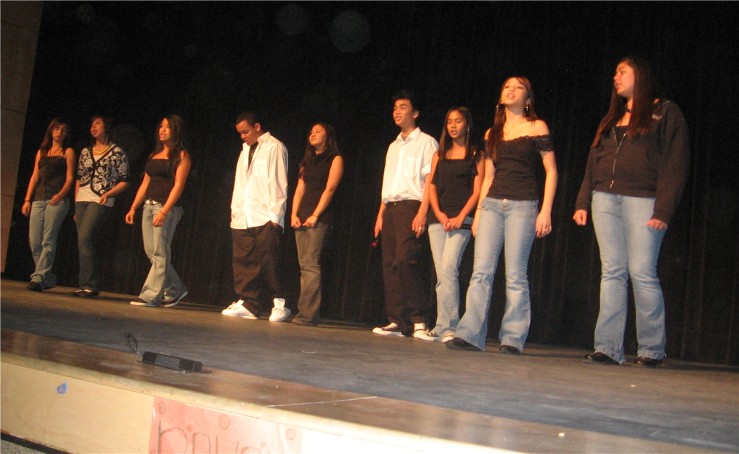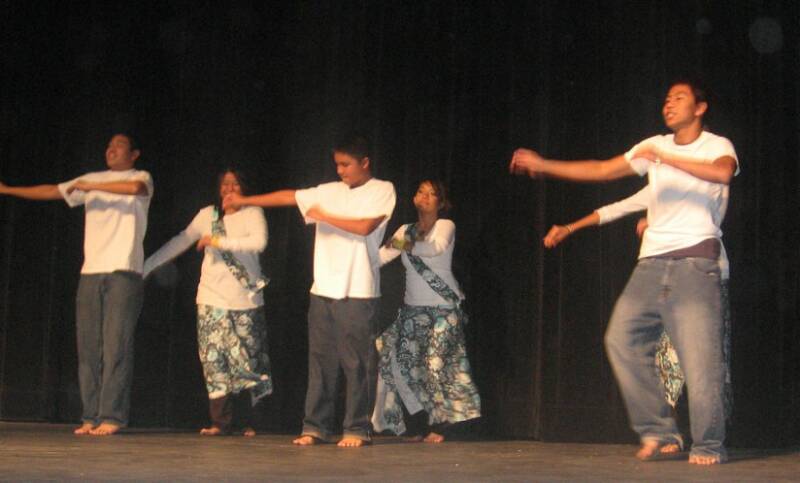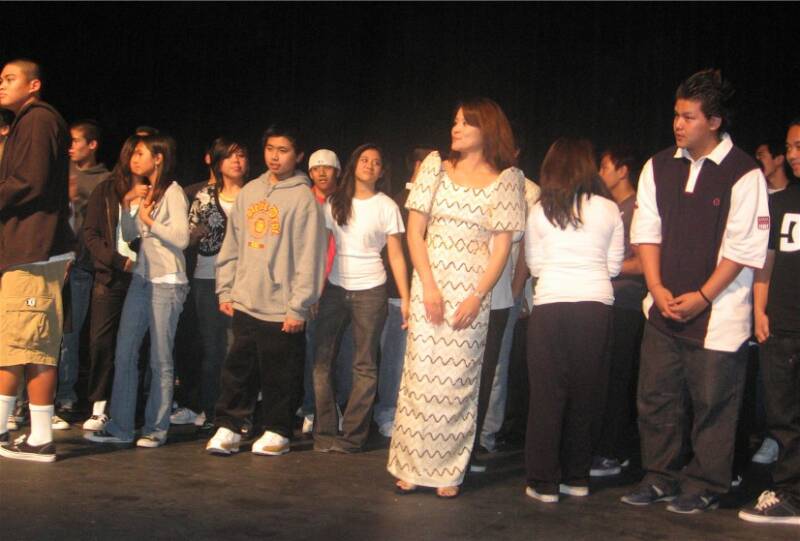My Journey as a Filipino Language Teacher
by Mai Estuart Sciarratta
December 11, 2007
Background
Several years ago I chose to enter teaching because I wanted a career that gives me the opportunity to positively impact peoples’ lives. I quit my job and pursued the full-time teaching credential program with much zest and passion for learning. After obtaining a Multiple Subject credential that allows one to teach at the elementary level, I applied to various positions and eventually was offered a position at the high school level as a Filipino language teacher in an excellent school district. Filipino is one of the foreign language electives in some high schools as part of university entrance requirements. While not originally what I anticipated, I found that I enjoy working with older students and cannot see myself doing otherwise. Also, to comply with “No Child Left Behind” requirements, I had to pass the CSET (California Subject Examination for Teachers exam in Filipino) and obtain a Single Subject credential.
Currently I teach in a high school in a suburban community 15 miles northeast of San Diego. It is located in a primarily middle to upper-middle income residential community. I am a multilingual and multicultural person, similar to the exposure of the population that I teach. My students are mostly American-born Filipinos whose parents or grandparents speak the language. I design and implement the curriculum which includes Filipino language, history, and culture that are all too familiar to my students. Thus, there exists a strong connection between students and teacher.
Because of my diverse background and experiences (plus wisdom in age!), I have worked with a wide variety of individuals. Every student is welcome in my classroom where I promote acceptance and appreciation to each one. Students enjoy the strong sense of family and practice “bayanihan,” which means collaborating together in an effective learning community.
Rewards
I am constantly amazed by the talents that students bring and share in the classroom. There have been many laugh out loud moments and anecdotes in the classroom. An administrator told me that she has observed these same students in other classes and they don’t give as much as they do to me. Parents tell me how much fun their children are having while learning the language. A student told her mom that if there is any session she should attend at “Back-to-School Night,” let it be Filipino class. There have been recognitions for “performance above and beyond the call of duty.” While these merits are rewarding, it is the relationships that I build with my students that are truly joyful. Particularly when students are not very interested in school at this age and the parents say how much they love the class, I am thrilled to have achieved a profound purpose.
One of my favorite memories was when we put together a culture night where students performed in front of family and friends in the community. They put together songs, dances, and skits to celebrate Filipino language and culture. It brought students’ knowledge beyond the classroom and got the community involved. The event was a great success and achievement.
Moving Forward: Education is the key.
While the presence of Filipino in a distinguished high school (it is among the nation’s top 1 %) is a huge honor, many Filipinos are still ignorant to the value of learning the language. They are stuck in four centuries ago when colonizers ordered Filipinos to learn and embrace the colonizers’ language first. Thus to this day, many Filipinos have tragically abandoned and deemed their own language - and even themselves - inferior. Teaching Filipino has certainly been a stand for something important and crucial to our identity as a people. Our youths today prove that we are moving forward, as they choose to learn their own heritage language. It is a slow move forward, but one that is steadily guarded by educators and forward thinkers in the community. While promoting stronger connections with family through language and culture, students are also gaining pride in Filipino which is beautiful, expressive, and one that is complete with parts of speech, grammatical rules, idioms, and figurative language. “May dilag ang tula at awit sa paglayang minamahal…” In Filipino class is where most students first learn about their own history and comprehend the how’s and why’s of their heritage culture. As it promotes appreciation of their roots and connection to the people closest to them, I hope to build a strong sense of identity in each student.
Mai’s Teaching Philosophy
ØMake life in the classroom mirror the life outside the classroom. Allow students to learn, use, and enjoy the lessons that are
relevant to their lives. Model not just the lessons, but also the approach to life by being respectful, organized, cheerful, fair,
and caring.
ØTeaching is a difficult job when you don’t prioritize the students. Learn from them by listening to their thoughts, feedback, and
reactions to the lessons and assignments.
ØLife is learning and learning is life. Everyday is a new day.
A Special Place
Last summer, I watched my dear friend Joy Ramos tell her daughter how “Mai was sooo good in Pilipino…so good.” I now believe that there is a special job for each one if they look with their heart. Ten years ago I would have never imagined being a teacher, much more a teacher in a room full of about 30-36 teenagers! Twenty years ago, I was painfully shy, culture-shocked, and could not possibly imagine speaking in front of a crowd. Today I not only speak but listen to, engage, and learn with a unique group of people. I am thankful to have found my special place with my name on it…Ginang Sciarratta. I hope to teach and touch the lives of many more.
Important Milestones
February 2006 – Mai starts a petition for a Filipino language program in the newest high school in Poway Unified and she gathers
signatures during Pilipino Culture Night. This petition is brought to school administrators.
April 2006 – A meeting is held between the parents, members of the community, and school administrators. With the leadership of
Dr. Juanita Santos Nacu, a parent who successfully started the Filipino program at Poway Unified School District in 1997, the
petition to start a Filipino program at Westview High School was approved. It was contingent upon having enough students sign up
for the class. Seventy-two (72) students signed up totaling to 2 solid classes of Filipino.
November 2006 – The first California Subject Examination for Teachers (CSET) for Filipino was administered. Passing this
exam meant compliance to the No Child Left Behind (NCLB) mandate that all California teachers be certified “highly qualified” in
order to teach a subject. This was an arduous process that the Filipino American Educators Association (FILAMEDA) of San
Diego County painstakingly fought for and finally achieved.
Facts
Filipinos are the second largest among the Asian Pacific Islander population in the U.S. and the largest in California (U.S. Bureau of Census, 2000). Tagalog is the fifth (5th) most prevalent language spoken in U.S. households (U.S. Bureau of Census, 2000). Three school districts offer Filipino language as an elective that meets college requirements for foreign language (Poway, San Diego Unified, and Sweetwater). Sixteen schools offer Filipino through middle and high school classes. There are approximately 3,110 students taking Filipino as a World/Foreign Language in California (California Department of Education, 2006).
Recruitment
On January 26, 2008, there will be a conference at San Diego State University (SDSU) to focus on recruitment of Filipino teachers. For details, please email Mai at maisciarratta@aol.com. Teacher salaries in California range anywhere from $43, 344 (starting salary) to $84,775 + depending on educational level and years of experience. Yes, there are benefits, retirement, and a 180-day work year.




